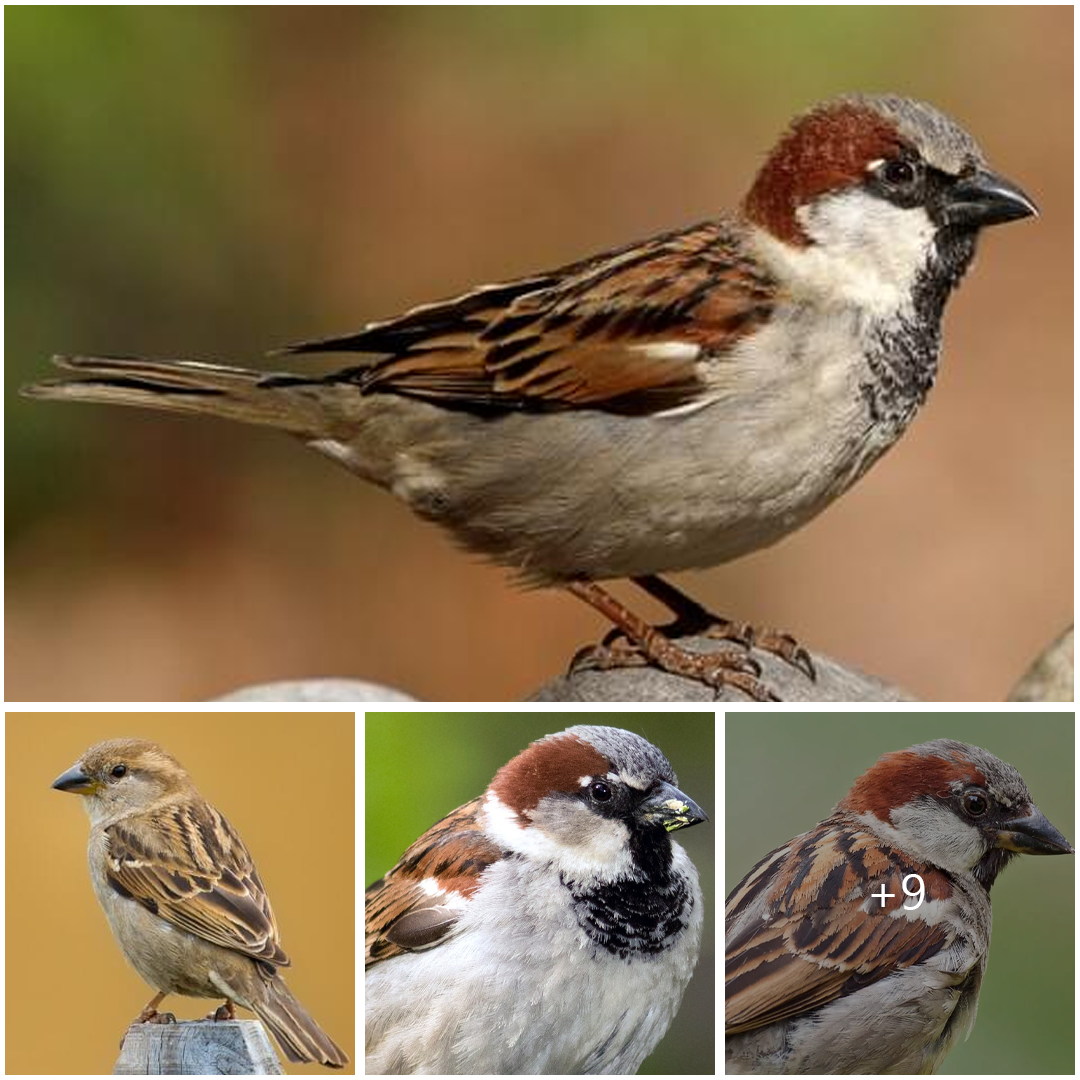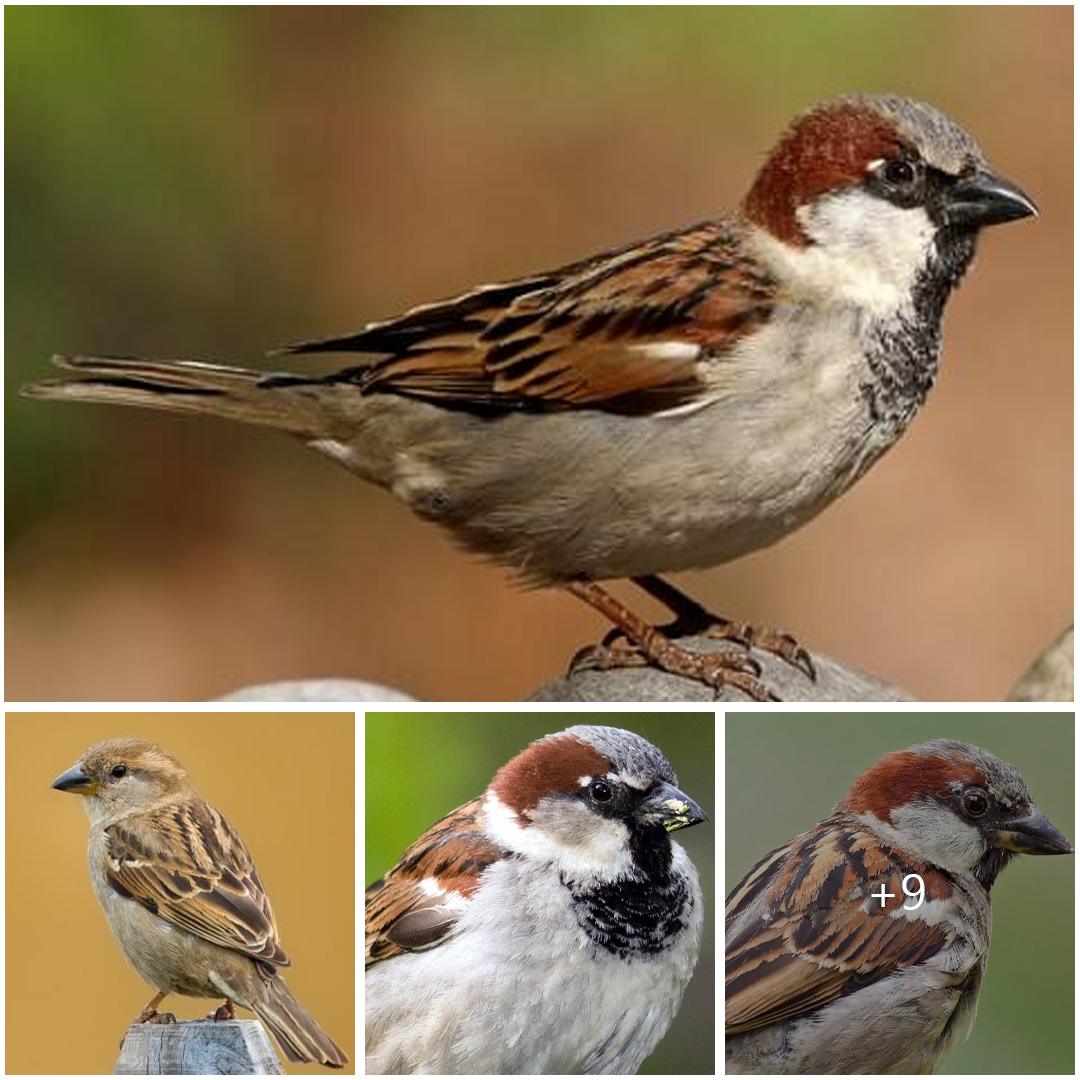

In the bustling world of urban landscapes and tranquil countryside alike, the sparrow stands as a familiar and ubiquitous presence. With its unassuming appearance and cheerful chirps, this small passerine bird has captured the hearts of people around the globe. Let’s delve into the distinct characteristics of the sparrow, shedding light on its physical traits, behavior, habitat, and significance in the natural world.
Physical Description
The sparrow belongs to the family Passeridae and encompasses a diverse group of small-sized birds known for their stout bodies, short tails, and conical bills. While specific characteristics may vary among different species and subspecies, sparrows typically exhibit muted brown or gray plumage, often adorned with subtle streaks or patches of color. Their compact size and rounded wings enable them to navigate through dense vegetation and urban environments with ease, while their sturdy bills are well-suited for cracking seeds and foraging for insects.
Behavior and Vocalizations
Sparrows are highly social birds, often congregating in flocks to forage, roost, and engage in communal activities. Their cheerful chirps and melodious trills fill the air, serving as a soundtrack to the daily rhythms of life in both rural and urban settings. These vocalizations play a crucial role in communication within sparrow communities, conveying messages related to territory defense, courtship, and social bonding.
In addition to their vocal prowess, sparrows are adept foragers, utilizing a diverse array of feeding strategies to obtain sustenance. While they primarily feed on seeds and grains, sparrows are opportunistic omnivores, supplementing their diet with insects, fruits, and scraps scavenged from human settlements. Their adaptability and resourcefulness enable them to thrive in a wide range of habitats, from grasslands and woodlands to parks, gardens, and city streets.
Habitat and Distribution
Sparrows are found on every continent except Antarctica, with species distributed across a variety of terrestrial habitats. While some species prefer open grasslands and agricultural fields, others are well-adapted to urban environments, where they capitalize on human-made structures and food sources. In cities and towns, sparrows can be commonly observed nesting in eaves, rafters, and crevices, as well as foraging for food in parks, gardens, and outdoor dining areas.
Ecological Significance
Despite their unassuming appearance, sparrows play a significant role in the ecosystems they inhabit. As seed-eating birds, they help control weed populations and disperse seeds, contributing to plant diversity and ecosystem stability. Additionally, sparrows serve as prey for a variety of predators, including birds of prey, mammals, and snakes, forming an essential link in the food web of their habitats.
Cultural and Symbolic Significance
Throughout history, sparrows have held cultural and symbolic significance in various societies around the world. In some cultures, sparrows are regarded as symbols of love, companionship, and domestic harmony, while in others, they are associated with simplicity, resilience, and adaptability. Their close association with human settlements has led to depictions of sparrows in art, literature, and folklore, where they often symbolize themes of home, community, and the beauty of everyday life.
Conclusion
In the tapestry of the natural world, the sparrow emerges as a humble yet cherished protagonist, embodying the timeless virtues of resilience, adaptability, and communal spirit. From the tranquil countryside to the bustling streets of urban centers, sparrows weave their way into the fabric of our lives, reminding us of the beauty and wonder found in the simplest of creatures. As we continue to coexist with sparrows and other avian neighbors, let us cherish and appreciate the vital role they play in our shared ecosystems and celebrate the enchanting charm of these beloved feathered friends.





